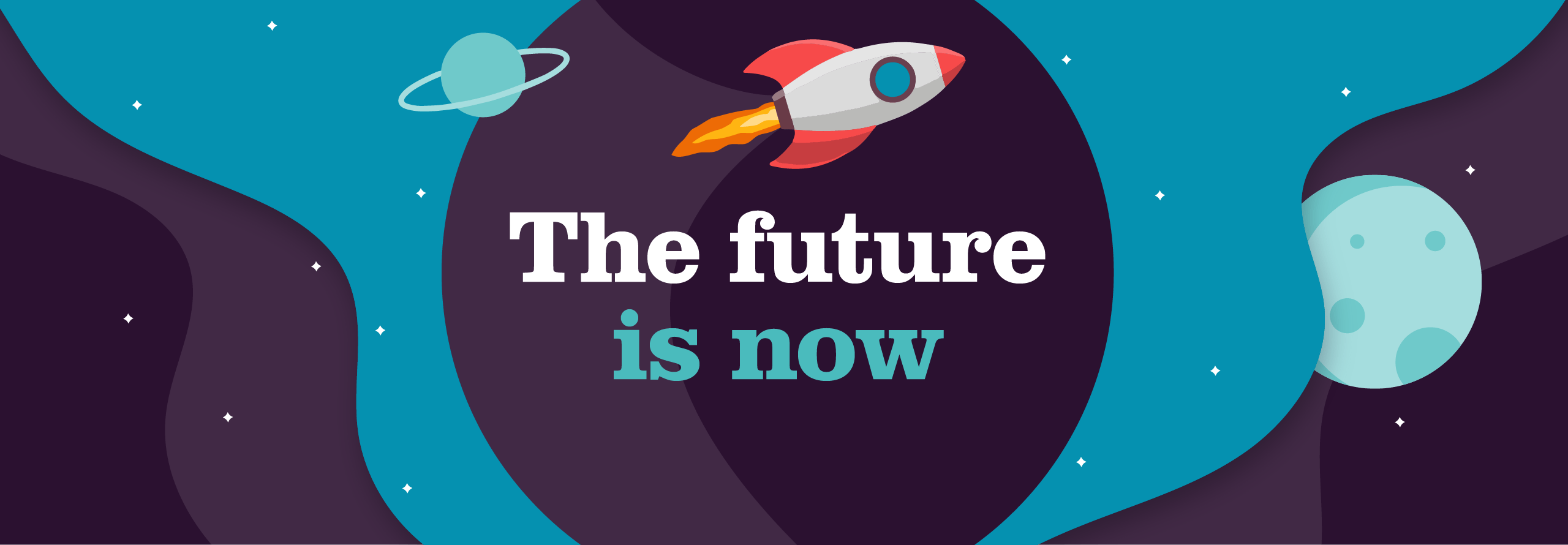Now is it just us, or is it particularly noisy out there right now?
We have the horrifying war in Ukraine, and the cost-of-living crisis – not to mention climate change. At work, we’re grappling with post-pandemic pivots, the great resignation and the realities of hybrid working. And at home, we’re trying to save money, and save the planet – not to mention tackling that ever-expanding pile of washing.
And that’s all on top of the day job. Pretty exhausting, right?
Well, we thought it was time we all took a collective breath and reconnected to what we believe is the thing that drives all of us: people. The humans at the centre of the inspiring workplaces we want to create.
In particular, the latest generation to join the workforce. Generation Z.
We’ve been thinking a lot about them recently after one of our clients was shocked to find out that her intern exclusively got her news from Tik Tok. As a result, she commissioned us to do some research on this particular demographic so she could understand them better.
We were a bit sceptical at first. We’d never advocate making blanket assumptions about people based on their age group – but when we started digging, we uncovered some really interesting facts. And let’s face it, Gen Z are the leaders of the future – so we thought today we’d share what we found with you.
The future is now
Gen Z are already here. Born between 1997 and 2012, they’re aged between 10 and 25. So if you started work at 16, you’ve already been in the workforce for almost a decade.
Today, under-25s make up 11% of the UK workforce. In three years, they’ll make up over a quarter. These figures are much higher in the retail and hospitality industry. And that means Gen Zers were much more vulnerable to furlough or redundancy during lockdowns.
Many Gen Zers have come of age, graduated or started their first jobs during the pandemic. That means many of them will never have experienced life in an office full time – and some might have never met colleagues face to face.
So, with that in mind, shouldn’t we be taking special care to support them and understand their perspective?
What do they care about? They sweat the big stuff.
From mental health to climate change, to diversity and inclusion. It’s no surprise that movements like BLM, Reclaim the Streets and Extinction Rebellion have unfolded as a result.
But on the other hand, they’re also prepared to hustle. 14% started a business, 63% think being successful is important, and they spend five hours a week consuming career content. This a great stat for our friends in L&D. And it’s no surprise. They’ve seen the 2008 banking crisis and another global recession on the horizon. Gen Z are a long way from the jobs-for-life mentality – they’re developing multiple trades to survive.
How can we design experiences that they’ll love?
At Home, we map the employee experience from hire to retire. You can do this exercise with any section of your workforce. But let’s take Gen Z and consider how they might experience these moments.
Did you know that only 4% of Gen Z use LinkedIn? So, if you’re looking to engage them and you’re relying on LinkedIn to recruit, it just won’t work.
Instead, why not use the people in your business, your existing Gen Z employees to do some peer-to-peer recruitment? Their network is likely to be ten times bigger than yours. Use their voices through blogs, vlogs, or social takeovers.
Gaming is Gen Zs favourite activity. So why not gamify the onboarding process? Rather than creating an employee handbook, you could create a virtual treasure hunt and get your people to find the answers themselves.
Gen Z are twice as likely to get their news through social media than any other source. That includes online news sites and apps. You need to talk to them in the way that they’re used to – so think media-rich platforms, and don’t be afraid to use external-facing channels to build your employer brand. Focus on visual content formats like short-form videos and memes.
We talked earlier about Gen Zs ability to hustle. So, embrace it. Don’t hold them back. Retain them by giving them plenty of ability to develop but support them if they decide it’s time to move on. Alumni networks are a powerful tool – you never know who they might send your way in future.
Seeing the world through the Gen Z lens
Gen Z aren’t the mystical creatures they’re made out to be. They’re people, just like the rest of us with their own values, views, and purpose. So, here’s our quickfire route to explore your world through the Gen Z lens.
Find them
What proportion of your workforce are they? Do you have any particular challenges with this group? Do you know what they want? If you’re not sure, just ask them…
Get to know them
Listening sessions offer the richest insight. By using a mixture of focus groups, surveys, 1:1 interviews and reviewing existing data, you’ll get a snapshot of what’s really going on in your organisation. We recommend aiming to speak to 8-10% of your population.
And ask the big questions. Things like, what did you expect our culture to be like? And does it match up? What motivates you? Can you be yourself? And do you have a voice? Don’t shy away from the big things – you’ll be amazed at what you hear.
But research doesn’t have to be boring. When people are enjoying themselves, they’re much more likely to open up and tell you what they really feel. Instead of asking ‘what’s onboarding like?’ why not ask ‘if you could describe your onboarding experience as a game, which game would you pick?’
Build your characters
With your insight now gathered, it’s time to bring these characters to life. We do that by using pen portraits. Pen portraits are rough outlines that describe what people care about, what they’re interested in, and what they think needs to change. It helps your team to build empathy – and also helps you to upskill those who might not be as aware of the research as you are.
Create a shared dream
The next step is all about co-creation. The best way to take a truly people-driven approach is to involve them every step of the way. Not only does it keep you true to the data, but it also creates champions to advocate for the programme further down the line.
A collaborative innovation session could look like this:
- Discover – review the data and look at some inspiration of what great looks like in other organisations
- Design – start to think about what the dream scenario could look like, then…
- Develop – Flesh out what the specific projects or programmes could be and who might deliver them.
Mind the gap
With your dream state defined, it’s important to understand how much of a stretch that’s going to be. By mapping your dream experience across the hire-to-retire timeline we can carry out a gap analysis to prioritise which areas need the most support and which ones might be closer to where we’d like them to be. Think about your quick wins and your bigger projects.
Test, test, test
It’s important to go back to your initial group and make sure that what you think you heard is what they said. No need to speak to everyone, 10% of that initial research group is enough. But it gives you confidence that what you’ve developed will land.
Get set, go
Then it’s time to go! Let’s make sure we don’t get stifled by perfectionism. Take small steps early on and be sure to communicate about what’s coming down the track. People don’t mind waiting – silence and seeing nothing happening is often worse than seeing a work in progress.
Keep talking
Employee experience is never done. We don’t get to tick the box and say it’s complete. We need to keep talking, keep listening, and keep adapting to fit what our people want and need.
And the impact is clear. Organisations that invest in their employee experience see material gains in productivity and performance. And that matters in a world where we are battling to win the war on talent.





 Back to all
Back to all




